I have a few questions about how to derive the differential gain and common mode gains:

simulate this circuit – Schematic created using CircuitLab
Differential Gain:
Taken from Art of Electronics
Imagine a symmetrical input signal wiggle in which input 1 rises by \$v_{\text{in}}\$ (a small signal variation) and input 2 drops by the same amount. As long as both transistors stay in the active region, point A remains fixed.
I don't follow how A would be fixed?
However taking it to be true (no current through \$R_3\$) I get the voltage gain as follows
$$(V_{\text{in1}} - 0.6)-(V_{\text{in2}}-0.6) / 2 \times (R_E+r_e) = 0-V_\text{OUT} / R_C$$
$$V_\text{OUT} / V_{\text{diff}} = -\frac{R_C}{2 \times R_E+r_e}$$
but in the AoE they have $$G_\text{diff} = \frac{R_C}{2 \times R_E+r_e}$$
What happened to the (-) sign?
Common Mode Gain:
Common Mode signal is $$(V_\text{in1} + V_\text{in2})/2 = V_\text{in2}$$
Following the suggestion to split the pair into 2 sections (I'm looking at section on the right)
$$(V_\text{IN2} - 0.6)/ (R_E + r_e + 2 R_3) = 0-V_\text{OUT} / R_C$$
This is as far as I get - I don't see how I can get rid of the 0.6 V to get the right answer of $$-R_C/(2 R_3+R_E)$$
